 |
ANOTHER NEVERENDING STORY
Oil on canvas, 36 x 48 inches, 1994
(Artist's collection)
 |
The origins of this painting were complex because the sketch was done many years before the painting was completed, but the direct stimulus to develop the composition came after the artist's involvement in modern Greek language and culture. Even though the final appearance of the painting seems to have nothing in common with Greek themes, but rather simply to be an evocation of many medieval topics, the first figures populating the composition were the five dancing girls, and they were inspired by Greek folklore and rembetika songs. The rest of the figures and details followed this initial setup. Since the girls were dancing, they had to be involved in some sort of a fair or market scene. They were soon surrounded not only by a bonfire and a number of stalls selling various foods, but by musicians, jesters, performers of all kinds, even the pumpkins (the work continued through Thanksgiving). The figure of a dancing monk inspired the left side of the painting, a monastery, with some monks contemplating going down to join the celebrations and at least one trying to warn the dancer that the abbot is coming! The medieval knight and his squire were added just for fun. The fair inspired the nature of the figures in front of the castle: a traveling troupe of performers entertaining the count and his family. Next, came the transitional area -- the bridge. Here we can see a beggar at the gates of the castle, a fanciful Chinese dragon on its way to the fair (tired of entertaining the count?) and a man rolling down on a cart carrying a huge barrel. That figure might have been inspired by one of the Breughel's paintings. The rotweiler at the bottom of the bridge represents the artist's puppy, Norman. The next area to be completed was the lower right corner, where two men are hand-making balloons and filling them with hot air from the bonfire. Above them, two lovers in a boat scare someone who decides to jump into the murky waters (leaving his shoes on the deck!), and, to the left, a couple is taking a ride in a boat. Above them, a man is secretly visiting his beloved; as he climbs the knotty rope, his hat falls off. The rest of the painting, like the silhouette of the Loch Ness monster, the fishermen, the peacocks, and the architectural details, balances the composition and adds interest to the story. Finally, the boy flying on the green dragon adds a completely new perspective to the painting and, surprisingly, provides the idea of its title. This work was reproduced in the Orlando Magazine in June 1994.
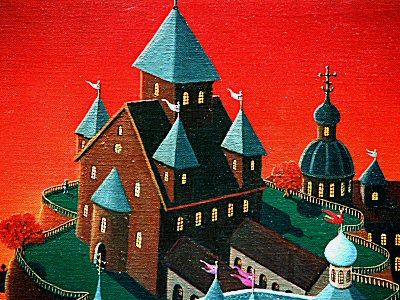 |
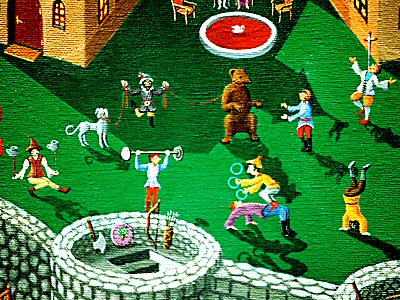 |
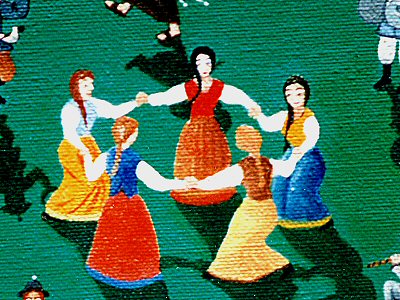 |
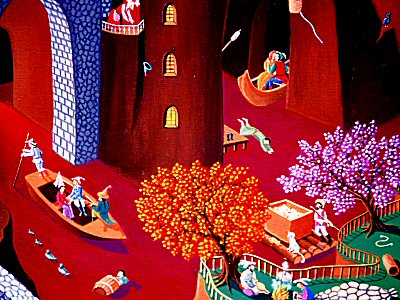 |
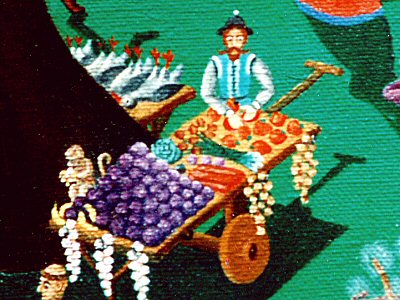 |
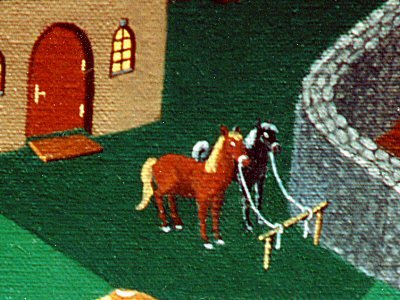 |
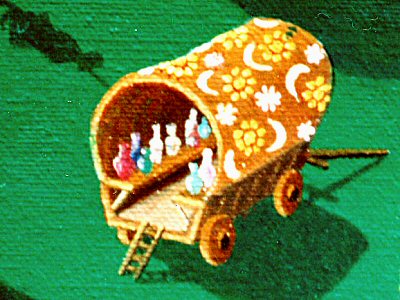 |
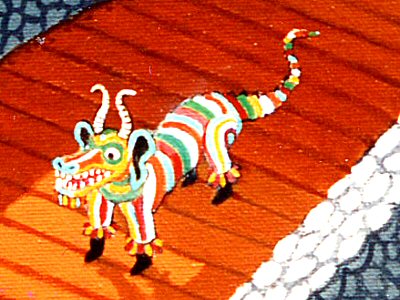 |
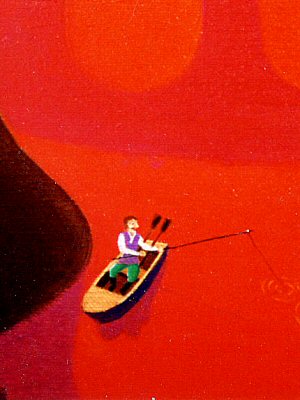 |
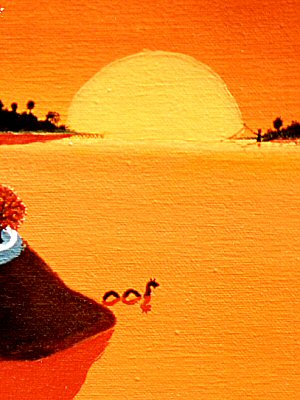 |
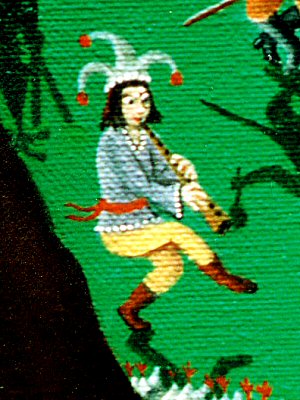 |
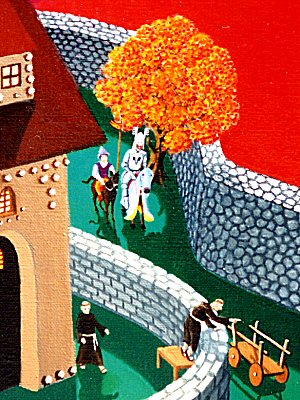 |